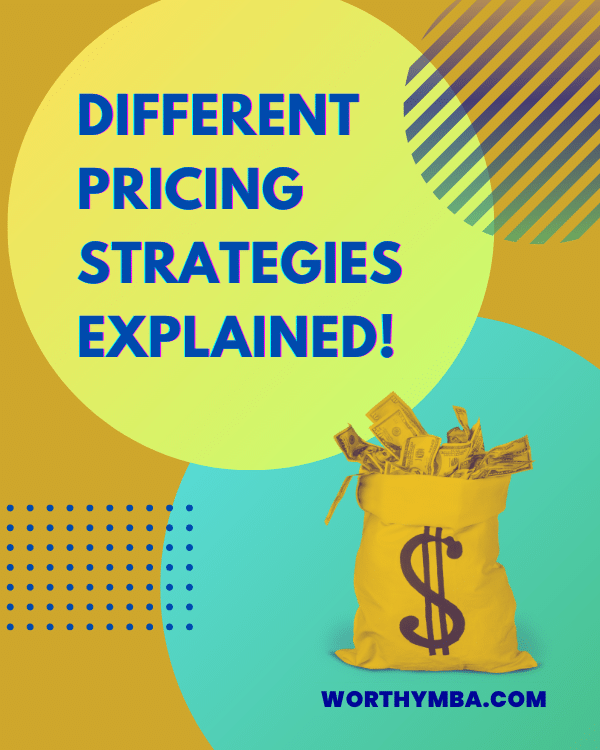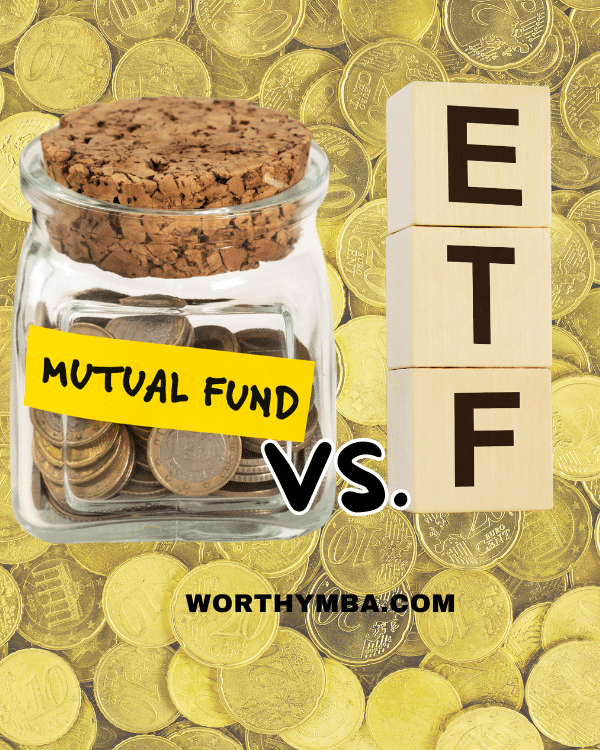Table of Contents
Introduction to the concept of pricing strategies in marketing
Every business intends to sell some product or service, sometimes both, to make monetary profits. And for making sales and eventual profits, businesses employ different marketing strategies. Marketing strategies have multiple components, but none are as overbearing as the price of the product in question. If you are familiar with the 4 p’s of marketing, i.e., product, price, place, and promotion, then you would know the importance this fundamental marketing matrix gives to the pricing of a product. It can be said that the pricing strategy is the fulcrum on which marketing mix or a product hinges.
Appropriately establishing a pricing strategy for a product or service may seem simple at first glance. After all, you just need to figure out your fixed cost plus the dynamic cost of production, add marketing dollars to it plus your desired profit, and your selling price is ready. However, the reality is much more complex than this basic arithmetic suggests. Businesses need to figure out the demand for a product, the competition’s offering, the average consumer’s paying capacity, and market size among many other factors to come out with a winning pricing strategy for their products.
The Product Pricing dilemma
Every business owner must deal with this eternal question that what should be the right selling price for their products or services. Because if a product is priced too high, no amount of branding and marketing effort can bring sustainable sales and create a perpetual demand for it. And on the other end of the spectrum, if a product is offered at too low a price, then a business risks making huge losses and eventually getting out of the market.
Assuming the pricing strategy of a product is tilted towards the lower side of price scale but not so much so that it is a loss-making venture, even then there is a risk to the future prospects of a business, as market share expansion, product improvement, innovation, marketing, and branding all need to be funded by profits. Thus, businesses need to make not just profit but sufficient revenue to fund other long-term goals of an enterprise.
The challenge is to find the sweet spot, the price point, where a product is attractive to the market and consumer and profitable enough for the business for long-term success. However, other considerations also affect a product’s pricing decisions. For instance, a marketer may try to penetrate the market early with extremely low prices, which may cause initial losses but a larger market share and brand value creation for the long term.
Different pricing strategies with examples:
It is clear from the discussion so far that pricing strategies are a crucial element of marketing that can affect a company’s sales, revenue, market share, brand value, and overall success. Keeping this broader premise in mind, let’s discuss the different pricing strategies in marketing with examples.
Cost-Plus Pricing strategy:
A cost-plus pricing strategy is a pricing method that involves adding a markup to the cost of production of a product or service to figure out the sale price. This pricing strategy is built on the idea that the cost of producing a product or delivering a service, plus a profit margin, should be the minimum price that a company should charge to ensure that it covers production, packaging, marketing, and operational costs and makes a profit.
Cost – Plus pricing strategy is used extensively in industries with unpredictable demand and government authority-regulated prices, for instance, construction, manufacturing, mining, healthcare, and defense production.
Example of Cost-Plus Pricing Strategy
Let’s look at an example of this pricing strategy, suppose a construction company needs to bid for a project and their estimates show the total cost of the project would be $26 million, including all the materials, labor costs, and other overhead expenses and the company wants to make 25% profit on the project then they would add $6.5 million to the project and give the quotation of $32.5 million to the bidding authority for that project.
Bid price = Total cost + (total cost x markup price percentage)
Bid price = $26 million + (25% of $26 million)
Total Bid price = $32.5 million
Therefore, the construction firm must bid $32.5 million to cover its costs and earn a desired profit of 25%. Clearly, the cost-plus pricing strategy is quite inelastic and rigid as it does not consider what the competition is offering and thus it may cause pricing that is out of sync with market realities. For instance, in the example I just discussed, a bidder may lose the bid if others offer similar services at a much lower markup or use a different, more practical, and flexible pricing strategy that results in lower bids.
Value-based pricing strategy:
Value-based pricing is a pricing strategy that sets prices based on the perceived value of a product or service to the customer, rather than on the cost of producing or providing it. The goal of this strategy is to capture a fair share of the value that the customer derives from the product or service while maximizing profits for the business.
Industries commonly employing value-based pricing include technology, software, pharmaceuticals, consulting, and luxury goods. These industries often have products or services with high value to the customer, where the perceived benefits outweigh the higher than a normal price point.
Example of Value-based Pricing Strategy
Let us look at an example of value-based pricing. Suppose a leather bag manufacturer with not much name in the market is selling an office leather bag for US $120. A reputed brand in the same industry can easily charge US $500 or more for a similar quality bag. The additional premium price is for the brand value and the consumer trust that the reputed company commands in the market. However, it must be noted that to earn that kind of consumer trust, a brand takes years of marketing, the promise of quality, and the consistent delivery of its brand promise.
Penetration Pricing Strategy:
Penetration pricing strategy refers to the pricing model where a new product or service is set at introduced in the market at a relatively cheaper price point. This pricing strategy is employed to spread consumer awareness about a product, increase sales, and quickly capture a sizeable chunk of the market in the initial phase post-launch of the product.
Typically, prices for such products increase after some time, as it is not sustainable for any business to sell below the desired price point for a prolonged period. Normally, businesses with deep pockets can afford to apply this strategy as it may lead to initial losses which many smaller companies find hard to bear.
Penetration pricing sets a brand or its products for the long haul in the market because by design its aim is to sell in volumes and to the masses. If a brand wants to reach out to a very large number of consumers and is banking on repeat sales over a long horizon, then it must focus on enhancing its market share as quickly as possible and penetration pricing strategy is the best tool for this purpose.
Technology, retail, and digital products or services are best suited for employing a penetration pricing strategy.
Example of Penetration Pricing Strategy
Let us look at an example of the penetration pricing strategy. A breakfast cereal-producing company may decide to launch a new flavor or healthy variant of an existing and well-known product. They may sell it at a highly discounted price and position it as a limited-time inaugural offer. Subsequently, as the sales zoom and a product gain market acceptance, the company is likely to align its pricing strategy with market realities.
Skimming Pricing Strategy:
The Skimming Pricing strategy is in a lot of ways opposite to the penetration pricing strategy. It entails initially introducing a product at a premium price and making quick profits before competitors offer substitutes for the product. For such products, prices are optimized after an initial bust and adjusted to their true market value.
Skimming Pricing only works with products that are unique and often uses the latest groundbreaking or disruptive technology to give the market something which was never seen before. There must be marketing buzz and hype before the launch of such products that creates a segment of willing customers who would happily pay more to be early adopters of such products and technologies.
Developing new and disruptive products with the latest technology innovation is an expensive business. There is a lot of cost and effort that goes into the research and development of such products. It is important to amortization of R&D expenses at the earliest till a product is in near monopolistic market condition, as later competition would invariably offer similar products at a lower price point. The skimming pricing strategy helps to milk the market quickly before a product loses its oomph factor and becomes another commodity available to consumers.
The industries such as mobile phones and gaming that rely on fast-changing technologies are the best exploiter of the Skimming pricing strategy.
Example of Skimming Pricing Strategy
The best example is Apple’s iPhones. Every time a new model comes loyal customers line up to buy it at the earliest despite ultra-premium pricing and the company makes a killing in the first few weeks of the launch.
Dynamic pricing strategy:
Dynamic pricing strategy refers to the practice of adopting a flexible sale price of products or services depending on market factors. This pricing strategy is a direct function of demand and supply in the market. The purpose is to rationalize revenue generation and capacity utilization in the medium to long term.
And for some industries, this pricing model is not a matter of choice but compulsion. For instance, in the airlines and hotel business, there is a predictable seasonal demand rush on holidays, special social events, and festivals, and air ticket and accommodation charges increase substantially during high-demand phases.
Similarly, these industries also endure seasonal demand slumps like rainy seasons and important examination days. Not only that, unexpected events like the recent Covid pandemic, major earthquakes, volcanic eruptions, or regional wars can all result in a traffic slump. Therefore, it is critical for such demand-dependent industries to make hay while the Sun shines and earn enough profits to keep business sustainable for economically gloomy phases.
Examples of Dynamic Pricing Strategy
This pricing model also applies to perishable goods with a lower shelf life, such as fruits and vegetables. I am sure, at some point, you would have observed that slightly more ripe fruits and vegetables are often offered at discounted prices or are a great candidate for bargaining with the seller.
This is because the sellers know if the quickly ripening stock is not sold in the next few hours or days, then it will be worth zilch in the market. Thus, it makes sense to cut short losses by selling at a discount, and in order to compensate for the loss or low margin for such inventory sellers sell at a much higher price when the product basket is fresh and at its best to consume.
Psychological Pricing Strategy
Psychological pricing strategy considers the consumer’s emotions and subconscious beliefs in reaching a selling price of a commodity. It is a well-established psychological fact that consumers are more likely to make a buying decision when prices seem attractive and affordable to them.
By design, this pricing strategy benefits from the consumers’ perception of a product or service’s relative value compared to the competing products. For this strategy to work, brands must create a perception of offering more or better-quality stuff for standard pricing or prices must seem relatively lesser to consumers.

3-Types of Pychological Pricing with Examples:
There are three principal methods of employing the psychological pricing strategy. Let us discuss them one by one with examples:
Charm Pricing Strategy:
This is the most common and widely used psychological pricing strategy. It works by pricing commodities or services for price points, which are marginally lower than a whole number. For example, instead of pricing a pair of shoes for USD 40, a company applying charm pricing would tag it at USD 39.99 and the product seems under USD 40 and cheaper than it is.
In today’s age of cutthroat competition and multiple producers, charm pricing is omnipresent in almost every product category. In fact, we all observe charm pricing all around us, so much so that if a product is priced in whole numbers, it immediately pricks our eyes and people are likely to believe, subconsciously that the product in question is expensive.
Prestige Pricing Strategy:
This psychological pricing strategy works on the opposite side of the spectrum to charm pricing as it deliberately positions the selling price on the higher side than the competition to create a mental perception of exclusivity and premium quality in the minds of consumers.
The companies applying prestige pricing know that by positioning their product as a premium commodity they are only targeting relatively few consumers with high-paying capacity, thus the marketing campaigns are tailored to a selected few rather than the masses to get optimum results from marketing budgets.
Premium packaging and promotion as a limited-edition product also help in raking up the sales of such products. Another important factor is that a product must appear unique in some ways for prestige pricing to work else this strategy could easily backfire and the product may fail in modern markets full of conscious customers.
For example, premium automobile brands often come up with limited edition car models in the market, or brand often cash on the fervor of major sporting events like the FIFA world cup or Olympics to propel limited edition tailored products, sometimes in partnership with iconic players or successful teams. Such products, despite their high prices, become a rage and are bought at a premium by emotionally charged and excited fans.
Prestige pricing creates so much hype in a brief span of time that it helps brands position themselves as distinct player, standing above the crowd in the market, which results in brand awareness and consumer connects, leading to long-term revenue generation.
Bundling Pricing Strategy:
This is another very common and effective psychological pricing strategy that many brands successfully employ. Here the focus is on increasing the average ticket size of sales, which is to sell more to a single consumer by bundling relatable products as a single discounted unit. This pricing module works by creating a perception of savings in the mind of consumers by buying product bundles rather than individual products separately.
Bundling pricing is commonly employed by digital market places where customers are often shown the option of buying allied products that complement a chosen product and they are offered a bundle price, which is lower than the sum of individual prices.
The addition discount is easily offset by the saving made on marketing of separate products and this strategy also optimizes shipping cost by selling relatively higher value goods in single delivery. In the end, this pricing strategy results in more revenue and higher profits. This pricing strategy also helps in clearing stock of products which might not have sold on their own.
However, there is one caveat here: the product bundles must be complementary and should appeal to the consumer as a genuine offer helping them get a useful set of products at discounted prices and not merely an attempt at upselling them an unrelated set of commodities.
For example, a consumer looking for party wears for kids may be interested in buying a pair of complementing party shoes and socks that go well with their chosen garments. However, they may get turned off if a brand tries to sell them school bags and water bottles along with a party-wear dress in a bundle. This may boomerang and a consumer could even drop the dress in the cart as a frivolous offer may cast doubt on a brand’s intent and credibility.
Geographic Pricing Strategy:
A geographic pricing strategy entails charging different prices for the same product or service at different physical locations. The variation in prices results from multiple macro and micro, business environment factors, such as a differential cost in conducting business at different locations, competition in the local market, supply chain efficiency level, demand for a product, and the purchasing power of consumers in a particular geography, etc.
Examples of Geographic Pricing Strategy:
Brands often sell the same or similar products at much lower prices in localities with lower per capita income than in a posh residency where people have higher paying capacity. They may polish their packaging to justify higher prices in affluent markets, but even that is not required in all products. For instance, a pack of apples may cost USD 50 in one locality, whereas you may buy the same pack at a discounted price of USD 30 in another relatively low-income locality.
For certain products, geographic pricing becomes a logical solution. For instance, petroleum products often cost lesser in the markets closer to the locality because of the much lower transportation costs, and on the contrary, they are sold at much higher prices in far-flung areas, miles away from the site of processing the crude.
Similarly, perishable products such as dairy products and ice creams that require cold storage while supplying are prone to different geographic prices because of the added cost of refrigerated transportation to far-off areas.
Normally, consumers understand the difference in prices in different geographies if they are backed by logical and genuine factors and thus brands must have a valid and explainable reason to charge differently in different locations else they will be perceived as a cheater and their reputation and ultimately sales may suffer.
Pricing Strategy Summary & Conclusion
Pricing strategies are an integral part of marketing. A well-thought-out pricing strategy can make or break a product’s success in the market. It is essential to understand the various pricing strategies and their applications to make informed decisions while pricing a product or service.
The cost-plus pricing strategy is useful for industries with unpredictable demand and government authority-regulated prices. Value-based pricing is the preferred pricing method for products or services with high value to the customer, where the perceived benefits outweigh the higher price point.
Penetration pricing strategy is a useful pricing model for businesses with deep pockets to seize a sizeable chunk of the market rapidly post-launch of a new product. In contrast, the skimming pricing strategy is ideal for unique products that use the latest groundbreaking or disruptive technology, where the product’s initial premium price helps the business make quick profits before competitors offer substitutes for the product.
Dynamic pricing strategy is a compulsion for demand-dependent industries, such as airlines and hotels, to rationalize revenue generation and capacity utilization in the medium to long term. The psychological pricing strategy considers the consumer’s emotions and subconscious beliefs in reaching a selling price of a commodity. It is a well-established psychological fact that consumers are more likely to make a buying decision when prices seem attractive and affordable to them.
Finally, the geographic pricing strategy entails charging different prices for the same product or service at different physical locations. Brands must have a valid and explainable reason to charge differently in different locations; else, they will be perceived as a cheater, and their reputation and ultimately sales may suffer.
To sum up the discussion, pricing strategies are crucial for all types of businesses to make informed decisions while pricing their products or services. A well-executed pricing strategy can lead to higher sales, revenue, market share, brand value, and overall success in the long run.
Kartikay Ungrish is the Founder-director of Worthy Education Academy & Worthy Financial Services. He is a UGC NET-qualified Assistant Professor of Management, A MBA, a licenced mutual fund distributor, and a financial advisor. He helps people build wealth through prudent investments in mutual funds and other financial products. Start by creating your free wealth management account with him as your financial advisor. Contact for more details.














